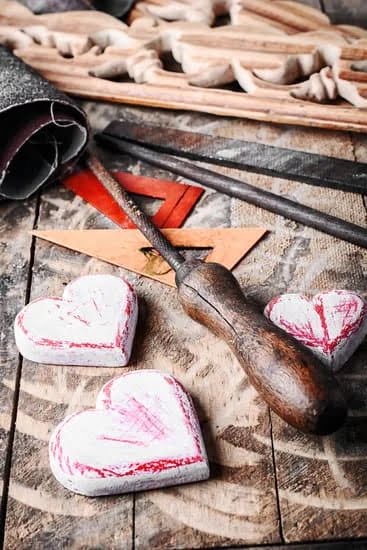Woodwork is a popular choice for adding character and warmth to any space, with varnished woodwork offering an extra layer of protection and durability. However, as design trends evolve and personal tastes change, you may find yourself considering a new look for your varnished woodwork. The question then arises: can you paint over varnished woodwork?
In this article, we will delve into the feasibility of painting over varnished woodwork, exploring the properties, benefits, and challenges associated with this endeavor. We will discuss the essential steps and materials necessary to prepare varnished woodwork for painting, as well as ways to assess its condition to determine whether painting or refinishing is the more suitable option.
As with any painting project, proper surface preparation is key to achieving a flawless result. We will delve into effective techniques such as sanding, cleaning, and priming that ensure successful paint adhesion when working with varnished wood surfaces. Additionally, we will explore different types of paints available for varnished woodwork, along with application tips and considerations for choosing the right finish.
Throughout this article, we will provide insights on executing the painting process itself using various techniques and tools that help achieve a professional finish. Furthermore, we will address common issues that may arise during painting and provide troubleshooting guidance on how to deal with streaks, bubbles, or inconsistencies.
Lastly, maintaining painted varnished woodwork is crucial to preserving its beauty for years to come. We will offer tips on protection measures, cleaning methods, as well as touch-up techniques that DIY enthusiasts can utilize to keep their painted woodwork in top-notch condition.
By the end of this comprehensive guide, you will be empowered with the knowledge needed to confidently transform your varnished woodwork through painting while achieving stunning results. Let’s dive into the world of painted varnished woodwork and discover the endless possibilities it holds.
Understanding Varnished Woodwork
Varnished woodwork is a popular choice for homeowners due to its durability, luster, and enhanced natural beauty. Understanding the properties, benefits, and challenges of varnished woodwork is crucial before attempting to paint over it.
Properties of Varnished Woodwork
Varnish is a type of clear finish that is commonly applied to wood surfaces. It provides a protective coating that enhances the natural grain and color of the wood while offering resistance against scratches, stains, and moisture damage. Varnishes are available in different sheen levels ranging from glossy to matte, allowing homeowners to achieve their desired aesthetic.
One key property of varnished woodwork is its smooth surface. The varnish creates a barrier that can make it challenging for paint to adhere properly without proper preparation. Additionally, varnish can darken or yellow over time due to exposure to sunlight or aging. This discoloration can affect the final appearance of the painted surface if not addressed during the preparation process.
Benefits and Challenges
There are several benefits of having varnished woodwork in your home. Firstly, it adds a touch of elegance and sophistication to any space. The rich tone and glossy finish created by varnish can instantly elevate the overall look of a room. Secondly, varnished woodwork is highly durable and resistant to wear and tear, making it suitable for high-traffic areas such as hallways or kitchen cabinets.
Despite its advantages, there are also challenges associated with painting over varnished woodwork. As mentioned earlier, proper surface preparation is essential to ensure successful paint adhesion. If not done correctly, the paint may not stick properly or result in an uneven finish. Another challenge lies in addressing any existing damage on the varnished surface such as cracks or peeling areas before applying paint.
Preparing Varnished Woodwork for Painting
When it comes to painting over varnished woodwork, proper preparation is key to achieving a successful and long-lasting finish. This section will outline the essential steps and materials required to prepare varnished woodwork for painting.
Step 1: Cleaning
Before starting the painting process, it is important to thoroughly clean the varnished woodwork. Use a mild detergent mixed with warm water to remove any dirt, grease, or grime that may have accumulated on the surface. A soft sponge or cloth should be used for this task as abrasive materials can damage the wood.
Step 2: Sanding
Once the woodwork is clean and dry, sanding becomes necessary to create a smooth and even surface for paint adhesion. Start by using medium-grit sandpaper to gently scuff the varnish layer, focusing on roughening up its surface rather than aiming to remove it entirely. This will help create what’s known as a “tooth” for the paint to grip onto.
Afterward, switch to fine-grit sandpaper and continue sanding in the direction of the wood grain until you achieve a smooth finish. Remember to wipe away any dust left behind from sanding before moving on to the next step.
Step 3: Priming
Priming is an essential step in preparing varnished woodwork for painting as it creates a barrier between the previous finish and new paint. Apply a high-quality primer specifically designed for use on varnished surfaces using a brush or roller. Ensure that every corner and crevice is covered evenly with primer.
Allow ample drying time as specified by the product instructions before proceeding with painting. The primer not only enhances adhesion but also helps prevent stains from bleeding through your final coat of paint.
In terms of materials, you will need a mild detergent, warm water, a soft sponge or cloth for cleaning; medium and fine-grit sandpaper for sanding; and a high-quality primer designed for varnished surfaces.
By following these essential steps and using the right materials, you can create a properly prepared surface that ensures optimal paint adhesion and a professional-looking finish when painting over varnished woodwork.
Assessing the Condition of the Varnished Wood
Before embarking on a project to paint over varnished woodwork, it is crucial to assess the condition of the existing finish. This assessment will help determine whether painting is a suitable option or if refinishing is necessary. By evaluating factors such as wear and tear, damage, and the overall state of the varnish, you can make an informed decision about how best to proceed with your project.
One important consideration when assessing varnished woodwork is whether the current finish is intact or not. If the varnish is in good condition, with no signs of peeling, chipping, or flaking, painting may be a viable option. However, if there are areas where the varnish has deteriorated significantly or if it is showing signs of extensive wear and tear, refinishing might be required.
Another aspect to consider when assessing varnished woodwork is its level of damage. Minor scratches or small dings can typically be addressed through painting alone. However, if there are deep gouges, water damage, or other substantial issues with the surface of the woodwork, refinishing may be necessary to restore its original beauty and integrity.
In addition to considering the condition and level of damage to the varnished woodwork, evaluating its overall state is crucial in determining whether painting or refinishing is more appropriate. If you prefer slight color changes without altering too much from its current appearance or want a quick refresh for your space, painting might suit your needs.
On the other hand, if you desire a completely different look for your woodwork or need to address significant flaws in its appearance, refinishing could provide more satisfactory results.
By carefully assessing these factors – including the integrity of the current varnish finish, level of damage present on the surface, and desired outcome – you can confidently determine whether painting over the varnished woodwork or refinishing it entirely is the best course of action to achieve your desired results. Taking the time to evaluate these aspects ensures that you will be able to make an informed choice and proceed with your woodwork transformation project with confidence.
Surface Preparation Techniques
Before painting over varnished woodwork, proper surface preparation is essential to ensure that the paint adheres successfully and provides a smooth and long-lasting finish. This section will provide an overview of the important techniques involved in surface preparation, including sanding, cleaning, and priming.
Sanding: The first step in preparing varnished woodwork for painting is to sand the surface. Sanding not only removes any gloss or sheen from the varnish but also creates a rough texture that helps the paint adhere better.
It is recommended to use medium-grit sandpaper (around 120-150 grit) and sand in the direction of the wood grain. Be sure to sand all areas evenly and pay extra attention to corners or crevices where varnish may be more stubborn.
Cleaning: Once the surface has been sanded, it is crucial to clean it thoroughly before applying any primer or paint. Use a mild detergent mixed with water to remove any dust, dirt, oils, or residues left from sanding. Wipe down the entire surface using a soft cloth or sponge. After cleaning, allow sufficient time for the woodwork to dry completely before proceeding with priming.
Priming: Primer is an essential component in achieving successful paint adhesion on varnished woodwork. It acts as a bonding agent between the varnish and paint layers and aids in creating a smooth and durable finish. Choose a high-quality primer specifically designed for use on glossy surfaces like varnish. Apply an even coat of primer using a brush or roller, following the manufacturer’s instructions regarding drying time between coats.
Properly preparing the varnished woodwork by sanding, cleaning, and priming sets a solid foundation for achieving excellent paint adhesion and ensuring a flawless finish. Taking the time and effort to prepare the surface thoroughly will result in a paint job that not only looks great but also lasts longer.
| Surface Preparation Techniques | Techniques |
|---|---|
| Sanding | Use medium-grit sandpaper (around 120-150 grit), sand in the direction of the wood grain. |
| Cleaning | Use mild detergent mixed with water, wipe down the surface using a soft cloth or sponge. |
| Priming | Choose a high-quality primer for glossy surfaces, apply an even coat following manufacturer’s instructions. |
Choosing the Right Paint for Varnished Woodwork
Choosing the right paint for varnished woodwork is crucial to ensure a successful and long-lasting finish. With a variety of paint types, finishes, and application tips available, it’s important to consider factors such as durability, coverage, and compatibility with the varnished surface. Here are some key points to keep in mind when choosing the right paint for your varnished woodwork:
Types of Paint:
- Latex or Acrylic: Latex or acrylic paints are popular choices for painting over varnished woodwork. They are water-based, quick-drying, and offer good adhesion to the surface. Additionally, they are low in VOCs (volatile organic compounds), making them environmentally friendly.
- Oil-based: Oil-based paints provide excellent coverage and durability on varnished surfaces. They have a longer drying time compared to latex paints but offer a smooth and glossy finish.
Finishes:
- Satin: Satin finishes strike a balance between matte and gloss. They provide a subtle sheen that hides imperfections well and is relatively easy to clean.
- Semi-gloss or Gloss: If you’re looking for a more durable finish that can withstand heavy use or moisture-prone areas, semi-gloss or gloss finishes are recommended. They offer a shiny appearance but may highlight surface imperfections more visibly.
Application Tips:
- Proper prep work: Before applying paint, ensure that the varnished woodwork is thoroughly cleaned and sanded to create a smooth surface for better paint adhesion.
- Priming: It’s generally advisable to prime varnished woodwork before painting to improve adhesion and prevent bleed-through of any stains or knots in the wood.
- Multiple coats: Depending on the desired color intensity and coverage, multiple coats may be necessary. Allow each coat to dry completely before applying additional layers.
Remember to consult the manufacturer’s recommendations specific to your chosen paint product for detailed instructions on application techniques, drying times, and cleanup. By choosing the right paint type, finish, and following proper application techniques, you can achieve a flawless transformation of your varnished woodwork.
Executing the Painting Process
Brushing vs. Spraying
One of the key decisions you’ll need to make when executing the painting process on varnished woodwork is whether to use a brush or a sprayer. Both techniques have their advantages and it ultimately comes down to personal preference and the specific requirements of your project.
Brushing is a tried and true method that allows for more control and precision. It is especially useful for working on smaller areas or intricate details. Using a high-quality brush designed for painting can help achieve a smooth and even finish.
On the other hand, spraying offers quick and efficient coverage, making it ideal for larger surfaces or projects that require a professional finish. It’s important to note that using a sprayer requires proper ventilation and protective measures, such as wearing goggles and respiratory masks.
Applying Multiple Coats
To achieve a flawless finish on varnished woodwork, it’s crucial to apply multiple coats of paint. This not only helps with color saturation but also ensures better adhesion and longevity. Before applying additional coats, make sure each previous layer is completely dry by following the manufacturer’s recommended drying time.
When applying multiple coats, it’s important to use thin layers rather than thick ones to avoid drips or an uneven finish. Sand lightly between coats with fine-grit sandpaper (such as 220 grit) to create a smooth surface for the next coat of paint to adhere to.
Cleaning Up
Once you have finished painting the varnished woodwork, it’s time to clean up any mess and properly care for your tools. If you used brushes, clean them thoroughly with warm soapy water or a brush cleaner specifically designed for your type of paint. For sprayers, follow the manufacturer’s instructions on how to clean the equipment properly.
Dispose of any leftover paint according to local regulations or consider donating it to a community paint reuse program if it is still in usable condition. Wipe down any spills or drips on the surrounding surfaces with a damp cloth or appropriate cleaning solution.
Taking the time to clean up properly will not only help preserve your tools but also ensure a smooth painting process for any future projects.
Troubleshooting Common Issues
When painting over varnished woodwork, it is important to be prepared for the possibility of encountering common issues such as streaks, bubbles, or inconsistencies. These issues can occur due to various factors including improper surface preparation, inadequate paint application techniques, or using low-quality materials. However, with the right knowledge and troubleshooting techniques, you can effectively deal with these problems and achieve a flawless finish on your painted varnished woodwork.
One common issue that DIY enthusiasts may encounter when painting over varnished woodwork is streaking. Streaks can occur when the paint is not applied evenly or there are variations in thickness on the surface. To prevent streaks, it is crucial to apply the paint in thin and even coats.
Start by loading a small amount of paint onto a brush or roller and apply it in long, smooth strokes following the grain of the wood. Avoid going back over areas that have already been painted as this can cause streaks and uneven coverage.
Another issue that may arise during the painting process is the formation of bubbles on the painted surface. Bubbles can occur when air gets trapped between coats of paint or when moisture becomes trapped underneath the paint film. To avoid this issue, make sure that all surfaces are properly cleaned and free from dust, dirt, or debris before painting. Additionally, it is important to allow sufficient drying time between coats to prevent moisture buildup.
Inconsistencies in color or texture can also be a common problem when painting over varnished woodwork. These inconsistencies can be caused by using different types of paint finishes or applying uneven pressure while painting. To ensure consistent color and texture, it is recommended to use high-quality paints and primers specifically designed for use on varnished surfaces. Additionally, use consistent pressure while applying the paint and try to maintain a steady hand.
By being aware of these common issues and implementing effective troubleshooting techniques, you can overcome any challenges that may arise during the painting process. With proper surface preparation, careful application techniques, and high-quality materials, you can achieve a flawless finish on your painted varnished woodwork and transform the look of your space.
Maintaining Painted Varnished Woodwork
Once you have successfully painted over varnished woodwork, it’s important to take proper care of your newly transformed surfaces to ensure their longevity and durability. Proper maintenance will help protect the paint and keep the woodwork looking fresh and vibrant for years to come. In this section, we will provide you with valuable tips on how to protect, clean, and touch up your painted varnished woodwork.
First and foremost, protecting your painted varnished woodwork is essential. To prevent any damage or wear on the surface, it is recommended to use coasters or placemats when placing hot or wet objects on the woodwork. This will help avoid any stains or discoloration that can occur from moisture or heat exposure. Additionally, it is wise to place protective padding underneath items that are frequently moved or placed on the woodwork to prevent scratches and dents.
Regular cleaning is also crucial in maintaining the appearance of your painted varnished woodwork. To clean the surfaces, use a mild detergent diluted in warm water and gently wipe down the woodwork with a soft cloth or sponge. Avoid using harsh chemicals or abrasive cleaners as they can damage both the paint and varnish layers.
It is important to note that excessive scrubbing should be avoided as well since it can cause paint wear. Once you have finished cleaning, make sure to dry the surface thoroughly with a clean cloth to prevent any moisture-related issues.
Over time, there may be instances where touch-ups are needed due to chipping, scuffing, or general wear of the paint on varnished woodwork. To ensure a seamless repair job, start by gently sanding away any rough edges around the damaged area using fine-grit sandpaper. Then apply a small amount of primer specifically designed for use on previously painted surfaces before touching up with the matching paint color.
It is important to blend the touch-up paint with the surrounding area for a seamless finish. Finally, allow the touch-up paint to dry completely before applying a clear varnish or topcoat to protect and preserve the repair.
By following these tips for protection, cleaning, and touch-ups, you will be able to maintain your painted varnished woodwork in excellent condition. Regular maintenance will not only keep your surfaces looking beautiful but also help extend their lifespan. With proper care, you can enjoy the fruits of your painting project for many years to come.
Conclusion
In conclusion, painting over varnished woodwork is a feasible and effective way to transform the appearance of your furniture or decorative pieces. Understanding the properties and challenges of varnished woodwork is crucial before embarking on this project. By properly preparing the wood surface through sanding, cleaning, and priming, you can ensure successful paint adhesion.
Assessing the condition of the varnished wood is essential in determining whether it should be painted or refinished. If the varnish is in good condition with no major damage or wear, painting can be a suitable option. However, if the varnish is heavily damaged or worn out, refinishing may be necessary for a longer-lasting result.
Choosing the right paint for varnished woodwork involves considering different types, finishes, and application tips. It is important to select a paint that is specifically designed for wood surfaces and matches your desired finish. By following proper execution techniques and using the right tools, you can achieve a flawless finish that enhances the beauty of your varnished woodwork.
Troubleshooting common issues such as streaks, bubbles, or inconsistencies during painting may arise but can be resolved with proper techniques and knowledge. Lastly, maintaining painted varnished woodwork requires regular protection, cleaning, and touch-ups to ensure its longevity and appearance.
With this comprehensive guide aimed at empowering DIY enthusiasts to transform varnished woodwork through painting, you now have the knowledge and confidence to take on this project. By following these steps and taking care of your newly painted woodwork, you can enjoy a refreshed look for years to come while showcasing your creative skills and personal style.
Frequently Asked Questions
Can you paint over varnish wood without sanding?
In most cases, it is not recommended to paint over varnished wood without sanding. Varnish creates a smooth and glossy surface that can make it difficult for paint to adhere properly.
Sanding the varnished surface helps to remove any existing varnish or topcoat, creating a slightly roughened texture that allows the new paint to bond more effectively. It also helps to ensure that the paint will have a more even application and appearance.
What happens if you paint over varnished wood?
If you choose to paint over varnished wood without proper preparation, such as sanding, several issues can arise. The most common problem is poor adhesion of the paint to the varnished surface.
This can lead to peeling, cracking, or chipping of the new paint layer over time. Additionally, if there are any imperfections on the varnished wood surface, such as scratches or dents, they may become more noticeable once painted over since painting may not hide these flaws as effectively as sanding would.
What is the best way to paint over varnished wood?
The best way to paint over varnished wood starts with thoroughly cleaning the surface using mild soap and water or a gentle cleaner specifically made for wood surfaces. After cleaning, sanding is crucial for achieving successful results. Using fine-grit sandpaper (around 220 grit), lightly sand the entire varnished surface in order to create a slightly abraded texture for better paint adhesion. After sanding, remove any dust residue using a tack cloth or damp cloth and allow the wood to dry completely before applying primer.
Applying a high-quality primer formulated for use on wood is essential as it promotes better bonding between the new paint and varnish, ensuring durability and long-lasting results. Once the primer has dried completely, proceed with painting using your desired type of paint and appropriate tools such as brushes or rollers intended for wood surfaces. Apply multiple thin coats of paint rather than attempting thick layers all at once for a smoother and more professional finish. Finally, allow ample time for the paint to dry between coats as per the manufacturer’s instructions, ensuring a beautiful and durable painted surface over the varnished wood.

Hi everyone! I’m a woodworker and blogger, and this is my woodworking blog. In my blog, I share tips and tricks for woodworkers of all skill levels, as well as project ideas that you can try yourself.





